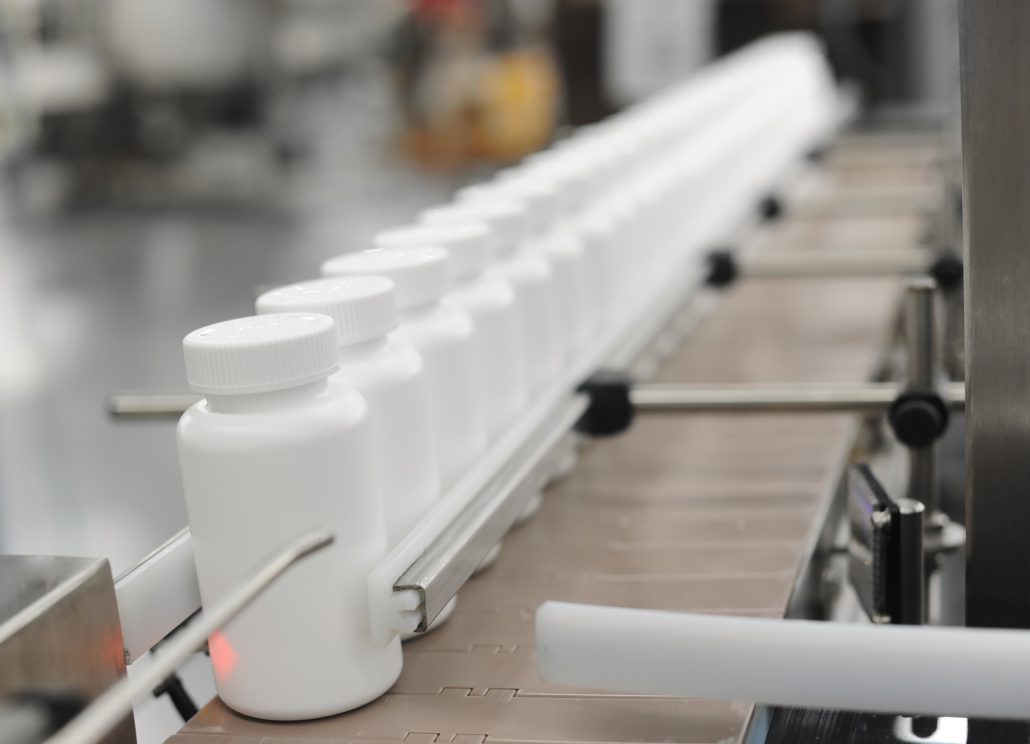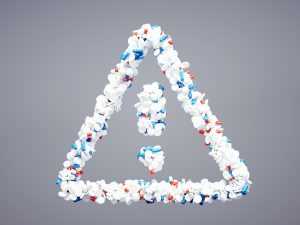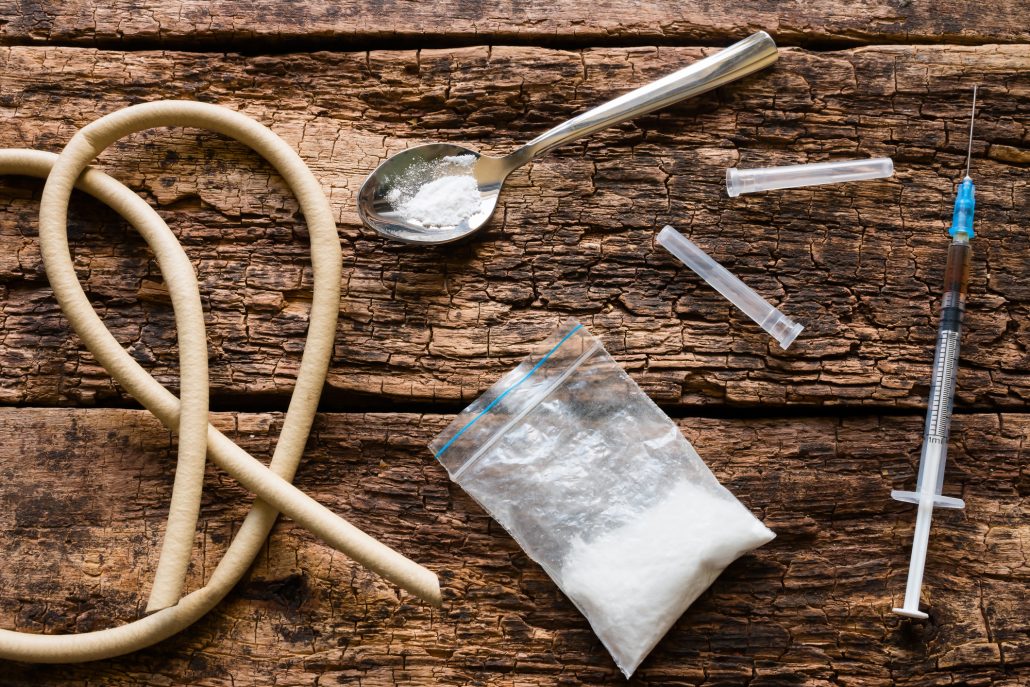by Justin Mckibben | Jul 11, 2017 | Drug Abuse, Opana, Opioids, Prescription Drugs

Oxymorphone is a powerful semi-synthetic opioid analgesic developed in Germany back in 1914. Since the painkiller’s introduction into the medical world it has gone by many brand names, such as:
-
Numorphan (suppository and injectable solution)
-
Opana ER (extended-release tablet)
-
Opana IR (immediate-release tablet)
-
O-Morphon in Bangladesh by Ziska pharmaceutical ltd
In the midst of the opioid epidemic in America many pharmaceutical drugs are now under close scrutiny for their addictive potential. Now, a public announcement has come to light explaining that in June of 2017, the U.S. Food and Drug Administration asked the manufacturer of Opana ER, a Oxymorphone medication, to remove the product from the market.
What is Opana?
Opana or Oxymorphone is meant for use as:
- Moderate to severe pain relief
- Preoperative medication to alleviate apprehension
- Medication to maintain anaesthesia
- As a obstetric analgesic
Oxymorphone extended-release tablets are designated for managing chronic pain. These tablets are also only for people already on a regular schedule of strong opioids for an extended time.
Oxymorphone immediate-release tablets are recommended for breakthrough pain for people on the extended-release version.
Endo International PLC is the Big Pharma empire based in Dublin, Ireland that manufactures Opana.
- 2006- Opana approved for use in the United States
- 2012- Endo changed the drug’s formulation to try to make it harder to abuse. The FDA approved sales of the new version, however the FDA prohibited Endo International from marketing Opana as abuse deterrent.
- 2013- the Centers for Disease Control and Prevention (CDC) reported an illness associated with intravenous abuse of oral Opana ER in Tennessee.
- 2015- Reports in Austin, Indiana indicated an outbreak of HIV was caused by recreational injection of Opana
Endo primarily makes generic medicines, as well as a number of brand-name specialty drugs. Endo reported that Opana ER last year posted net sales of $159 million.
Opana ER Abuse
The FDA has taken a revolutionary stance after deciding that the risks greatly outweighed the benefits of Opana use.
In a statement on Thursday Endo International PLC said it will voluntarily stop selling the pills. However, the drug-maker does not necessarily agree with the conclusion made by the FDA, adding in their statement that the extended-release opioid is safe and effective when used as intended, and that Endo still believes Opana ER’s benefits outweigh its risks.
And yet, FDA advisers are firm after reviewing the safety of Opana ER and voting 18-8 against keeping it on the market.
The agency said it had perceived a “significant shift” from individuals abusing the drug recreationally by crushing and snorting the pill to injecting it instead. Besides the stories in Indiana and Tennessee, Opana was also called out for contributing to the rising rates of drug overdose and overdose deaths.
According to the FDA there were no generic versions of the reformulated Opana ER on the market, as of June. However, there are two generics of earlier versions of Opana on sale, called Oxymorphone.
The Big News For Big Pharma
The big news here is that this is the first time the U.S. Food and Drug Administration has actively taken steps to remove a currently marketed opioid pain medication from sale due to the drugs abuse and the related public health consequences!
Some see this as a major move in the fight toward overcoming the opioid addiction problem gripping the nation.
Thus, Endo International PLC has committed to working with the FDA to try to minimize disruption for patients relying on the drug for pain relief. Of course those prescribed to the drug for medical reasons will also need to be provided with alternative treatments.
But the FDA isn’t done yet. The U.S. Food and Drug Administration claims that its agencies will be reviewing other opioid painkillers and could take further action to regulate or even eliminate dangerous opioid medications like Opana ER.
Taking steps to reduce the impact of this epidemic is a step in the right direction. Big Pharma might be in for a bit of a shakedown from the FDA as they attempt to reduce the amount of dependence on opioids. If you or someone you love is struggling, please call toll-free now.
CALL NOW 1-888-922-5398
by Sher Delva | Jul 5, 2017 | Addiction

Benzos are so overused that they top all prescriptions in psychiatric medicine and are among the most prescribed medication of any type in the United States. Nearly 50 million benzos prescriptions are written every year.
Prescriptions for benzos have skyrocketed over the past two decades. Between 1996 and 2013, the number of prescriptions for benzodiazepines more than tripled and fatal overdoses more than quadrupled.
What’s the Big Deal?
Benzos are known for helping with anxiety disorders and insomnia, so what’s the big deal if they are heavily prescribed?
Well, there are a couple of reasons why this is a major problem.
First, there is evidence indicating these drugs do not work well over the long-term. Studies reveal that long-term use of benzos can increase anxiety symptoms. Furthermore, it is possible to treat anxiety and sleep disorders without medication, or at least with other medications besides benzos.
The second problem is the addiction and dependence risk. People who receive high doses of benzos can become physically dependent fairly quickly. Without medical supervision, the withdrawals from benzos are severe, ranging from intensified anxiety to high blood pressure, seizures, and convulsions.
The longer someone uses benzos, the greater the likelihood of addiction. People who misuse benzos tend to take higher-than-prescribed doses or mix the pills with alcohol or other drugs. Benzos are often chewed or crushed which interferes with the timed-release formula and speeds up the effects. This way of using benzos is extremely dangerous.
A Deadly Combination?
The true dangers of benzos really amplify when they are taken with other substances like opioids and alcohol. The risk of combining benzos and opioids is well-known, yet many doctors prescribe benzos and opioids together to patients.
From 2001 to 2013, benzos and opioid prescriptions increased by 80%, according to an analysis by researchers at the Stanford University School of Medicine. It is not considered safe to use both together yet this is fairly standard practice.
Opioids vs. Benzos?
Highlighting the dangers of benzos is not intended to diminish the significant dangers of prescription painkillers. Make no mistake, we are in the midst of an opioid epidemic, and opioid addiction has become a national crisis. However, in 30 percent of opioid-related deaths, a combination of benzos and opioids caused the overdose. That’s why it is so important to talk about benzos when we are discussing the opioid epidemic.
Why is this combination so deadly?
Opioids and benzos both slow down the body systems, particularly the respiratory and cardiovascular systems. Therefore, it is not difficult to understand why this combination is so risky. You are essentially combining two substances that slow down the functioning of your body. If you add a cocktail on top of that, it only compounds the problem. In worse case scenarios, this combination of substances causes breathing to stop.
In addition, alcoholics regularly abuse the benzo alprazolam, known by its brand name Xanax. Alcohol is a depressant so combining alcohol with the sedative effects of benzos increases the likelihood of overdose and respiratory failure.
Should Doctors Take the Blame?
The use of benzos often begins in the form of a prescription. Dual prescriptions of benzos and opioids are far from uncommon. Doctors are more likely to prescribe to patients who complain of pain, anxiety, and insomnia during a limited 15-minute consultation time.
In this rushed state, a physician may desire to help a patient but not have the time to explore the underlying causes. Therefore, medication becomes the easiest treatment. It unclear whether doctors are adequately warning their patients of the potential dangers of combining these drugs to help prevent addiction. As for now, it is difficult to place the blame on one person or thing, but one thing is for certain: people need to know the risks.
—
Overall, more and more people are struggling with addiction, and overdose death numbers have reached epidemic levels. If you are currently struggling with addiction, please do not wait. Recovery is possible. Call toll-free today.
CALL NOW 1-888-922-5398
by Sher Delva | Jun 22, 2017 | Addiction, Addiction Medicine, Addiction Stigma, Addiction Treatment, Stigma, Therapy, Withdrawal
 The opioid epidemic continues to reach epidemic numbers, and with the increasing overdoses comes increasing cases of hepatitis C. New cases of hepatitis C have nearly doubled over the past few years. Furthermore, those with opioid addiction are more likely to suffer from a variety of health disorders, complicating treatment for substance use disorder.
The opioid epidemic continues to reach epidemic numbers, and with the increasing overdoses comes increasing cases of hepatitis C. New cases of hepatitis C have nearly doubled over the past few years. Furthermore, those with opioid addiction are more likely to suffer from a variety of health disorders, complicating treatment for substance use disorder.
Hepatitis C is among the most concerning disorder to affect people with opioid addiction. People who abuse opioids are 9.1 times more likely to have hepatitis-C (HCV), in comparison to those who did not abuse opioids, according to an analysis by the health care company Amino. Amino drew data from the claims of 3.1 million privately insured patients between 2014 and 2016.
As the opioid epidemic spreads throughout the country, new cases of HCV have skyrocketed. In 2014, there were an estimated 30,500 new cases in the United States. This is nearly double the number of new cases in 2011, according to STAT News.
The CDC reports that new HCV infection is rising specifically among intravenous drug users under 40 years old, particularly in more rural areas. People with opioid use disorder are more likely to drink to excess, and more likely to have suicidal ideation.
While these numbers are shocking, many are not surprised:
“It’s known that people with co-occurring behavioral and mental health issues are at high risk for addiction even when prescribed opioids for a bonafide prescription medical use,” Dr. Anna Lembke, a Stanford University psychiatrist, and opioid addiction expert, told Amino.
However, Lembke was particularly moved by the fact that people with opioid addiction are seven times more likely to suffer from “failed back syndrome,” a chronic condition that is diagnosed following back surgeries.
“What I thought was really interesting was the correlation with failed back syndrome,” she said. “Perhaps failed back syndrome is a risk factor for developing an opioid use disorder—and that could be part of the reason why this community experiences such chronicity and lack of improvement. This is a subgroup that’s especially vulnerable to opioid misuse.”
The data collected by Amino looked at health claims among people with a variety of insurance codes, representing conditions from opioid dependence to opioid abuse in remission. Amino is a private insurer, and the data revealed a sharp increase in opioid abuse specifically among those with private insurance. According to the data, there was a six-fold increase in opioid-related insurance claimed between 2012 and 2016 among private insurers.
However, Lembke notes that this sharp increase may be underrepresented:
“Patients don’t want to carry them on their charts, and doctors don’t want to stigmatize their patients,” said Lembke. “But they will go ahead and chart it if there’s utility in it. And the utility is you can’t get buprenorphine, methadone maintenance, or naltrexone paid for by a third-party payer unless it’s diagnosed.”
Last month was Hepatitis Awareness Month. The treatments for hepatitis C have really come a long way, and it no longer as life endangering as It once was. The key is to seek treatment early. Unfortunately, due to the stigma of addiction, many are afraid to get tested.
Studies like these show that the numbers are not improving. Those with opioid addiction seriously need testing to prevent the disease from progressing any further. Please do not feel shame about testing for this disorder. Furthermore, if you are struggling with substance use disorder, please reach out to us. We have the tools to guide you to a sober life. Do not wait. Call today.
CALL NOW 1-888-922-5398
by Justin Mckibben | May 5, 2017 | Addiction, Detox, Drug Abuse, Heroin, Opioids, Withdrawal

Heroin (diacetylmorphine) is a Schedule I controlled-substance in the United States and is considered by many to be the most addictive drug in the world when compared to other more popular illicit drugs. Heroin is typically associated with the highest likelihood of developing an addiction both psychologically and physically.
Given the fact that the country is facing the most deadly drug epidemic in American history thanks to the opioid overdose outbreak, heroin abuse is now a primary concern facing most of the nation. Other opioids, like prescription painkillers, have contributed to the rising rates of heroin use, and the addition of other potent drugs like fentanyl, heroin is more dangerous than ever.
Heroin overdose is currently one of the top causes of accidental death. People use more than the body can handle and it shuts down. Also, the withdrawals of heroin can be particularly difficult. So how long does heroin stay in your system?
How Long Does Heroin Stay in Your System: Important Elements
When asking how long does heroin stay in your system we have to examine some of the important elements that impact the effects of heroin on the body. Heroin is typically injected intravenously to make a faster impact, but it is also smoked or snorted. Heroin has longer lasting effects compared to drugs like cocaine and meth, but it also has a shorter half-life of only approximately 30 minutes.
What does half-life of heroin mean? Essentially, when an individual uses a single dose of heroin, it will take about 30 minutes for half of the drug in the person’s system to be flushed out. However, some studies actually suggest that this half-life is as short as 3-8 minutes, not 30.
The accurate amount of time it would take is not cut and dry. The half-life of heroin depends on a number of factors for each individual, including:
- Height
- Weight
- Age
- Genetics
- Body fat
- The amount taken
- Purity of the drug
- Method of use
- Metabolism
- Health of the liver
- Kidney health
- Hydration
Not all bodies are the same, so of course not all bodies will be able to get rid of heroin at the same exact rate. A body with more fatty tissue and less hydration will probably retain the chemicals longer than someone well-hydrated with a lean build.
How Long Does Heroin Stay in Your System: Drug Testing for Heroin
Some might hope they can measure the presence of heroin in the system based on drug tests. Of course the length of time a drug is detectable with a drug test depends directly on the rate at which heroin leaves the body. Different drug tests often have different lengths of time they measure, so one might be able to tell you someone used heroin, but it may not be particularly active in the body.
Approved drug tests through the Food and Drug Administration (FDA) for heroin use:
- Blood
- Saliva
- Urine
- Hair follicle
Heroin is typically no longer detectable in a person’s urine after just 2 days, but some tests have detected positive results in up to 7 days.
Blood and saliva tests aren’t often used for most opioids because they have such a short half-life. It can only take about 5-6 hours for heroin to be undetectable for these tests, but in some cases it may actually last up to 2 days.
The only effective long-term test for traces of heroin is the hair follicle test, which can detect heroin for up to 3 months or more. However, if you are trying to find out if heroin is still active in the body, the long-term doesn’t really help.
Many tests now look for heroin metabolites, which are what is created when the liver metabolizes the drug. These stay in the system much longer than the actual intoxicant, so while you can detect the presence of the metabolites, the drug itself isn’t necessarily active. However, many believe that among long-term and/or frequent heroin users, the drug may actually remain in a person’s system for much longer than detectable on a drug test.
How Long Does Heroin Stay in Your System: Withdrawal
One reason many people will want to know how long heroin stays in the system is for the sake of overcoming their withdrawal symptoms. Especially for those who are familiar with suffering through these painful periods of abstinence, the question of how long does heroin stay in your system is about avoiding extended discomfort.
Withdrawal symptoms of heroin include:
- Sweating
- Insomnia
- Malaise
- Extreme anxiety
- Depression
- Itchiness
- Excessive yawning and sneezing
- Runny nose
- Cold sweats
- Chills
- Severe muscle and bone aches
- Nausea
- Vomiting
- Diarrhea
- Fever
- Cramp-like pains
- Involuntary spasms in the legs, arms, and neck
Heroin withdrawals will not be the same for everyone. The same things that impact how long it stays in the system will also impact how severe the withdrawals are. Other substances that are used along with heroin will also have an impact on how serious the withdrawals can be and how long they may persist.
It has been estimated that heroin withdrawal symptom can start within 6-12 hours from the last dose and may be present up to 5-10 days.
How Long Does Heroin Stay in Your System: Overdose Danger
One big reason things like the half-life matter is because of how it increases the risks of overdose.
If we say that after ingesting heroin approximately 50% of the drug has been cleared from the body in somewhere between 8-30 minutes, what tends to happen during this time is that many people assume by time their “high” ends, most of the heroin is already fully cleared from their system. However, when the “high” ends, up to 50% of the heroin will still be in your system, and so will its metabolites! So while some people think the high wears off that quick so they may think it’s safe to do more, there is still a fair amount of that drug present in the body.
Although heroin is quickly metabolized and eliminated from the body, its metabolites remain present for a longer duration. When heroin is used it is de-acetylated into 6-monoacetylmorphine (6-MAM). This chemical then metabolizes into morphine. Morphine’s half-life is estimated to be between 1.5 and 7 hours. As a result, the morphine in the body created by using heroin could stay in your system for 1.60 days before it is entirely eliminated.
So when we ask how long does heroin stay in your system, it isn’t a one-size-fits-all thing. What we can say is that one thing the probably contributes a lot to the skyrocketing rates of overdoses and deaths is that people don’t understand the heroin half-life or how long it stays in the system.
The longer the drug is in the system, the harder it will be to detox from it. That is why medical detox is so crucial to effectively and safely getting off of heroin. It also shows why treatment can be critical to lasting recovery. If you or someone you love is struggling, please call toll-free now.
CALL NOW 1-888-922-5398


 The opioid epidemic continues to reach
The opioid epidemic continues to reach 

